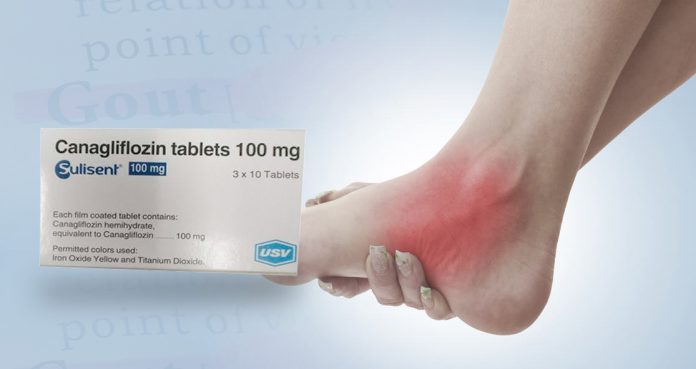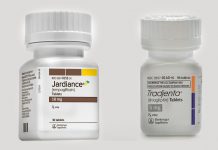A new study, published Monday in Annals of Internal Medicine, has found that a class of diabetes drugs called sodium-glucose cotransporter-2 (SGLT2) inhibitors could help reduce the risk of gout in people with type 2 diabetes.
Diabetes medications that belong to the SGLT2-inhibitor class of drugs include canagliflozin, dapagliflozin, and empagliflozin.
The study, funded by Brigham and Women’s Hospital, involved more than 200,000 people from a commercial database in the United States.
Researchers found that SGLT 2 inhibitors produce glycosuria – high levels of sugar in the urine – resulting in the secretion of uric acid in the urine and reducing serum uric acid levels in the body.
They found that there was nearly a 40 percent risk reduction in gout in patients who received SGLT2 inhibitors.
Gout is a painful inflammation of the big toe and foot, which is caused by defects in uric acid metabolism, resulting in deposits of the acid and its salts in the blood and joints.
Study co-author Dr. Michael Fralick said, “SGLT2 inhibitors might be an effective class of medication for the prevention of gout for patients with diabetes or metabolic disorders.”
The authors noted that new gout treatments are needed because a recent randomized trial demonstrated that Uloric (febuxostat) increased the risk of cardiovascular death when compared with Zyloprim (allopurinol), forcing the FDA to add a boxed label warning.
The researchers said, “Logically, patients with hyperuricemia and higher serum uric acid levels at baseline have a greater potential for reducing uric acid levels. If proven, this will be relevant for adults with diabetes who also have hyperuricemia, and one day may also be relevant for adults with hyperuricemia who do not have diabetes.” However, they cautioned that the potential benefit of SGLT2 inhibitors on gout should be weighed against the known risks, such as genital infections, diabetic ketoacidosis, and the high cost.





















